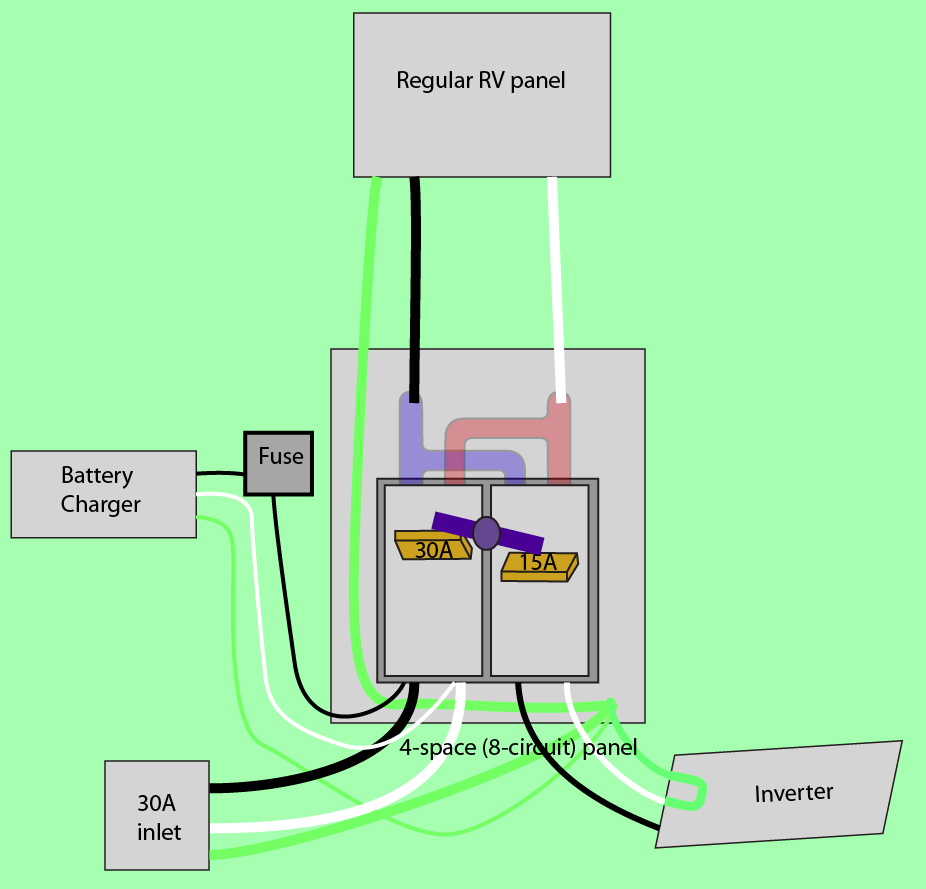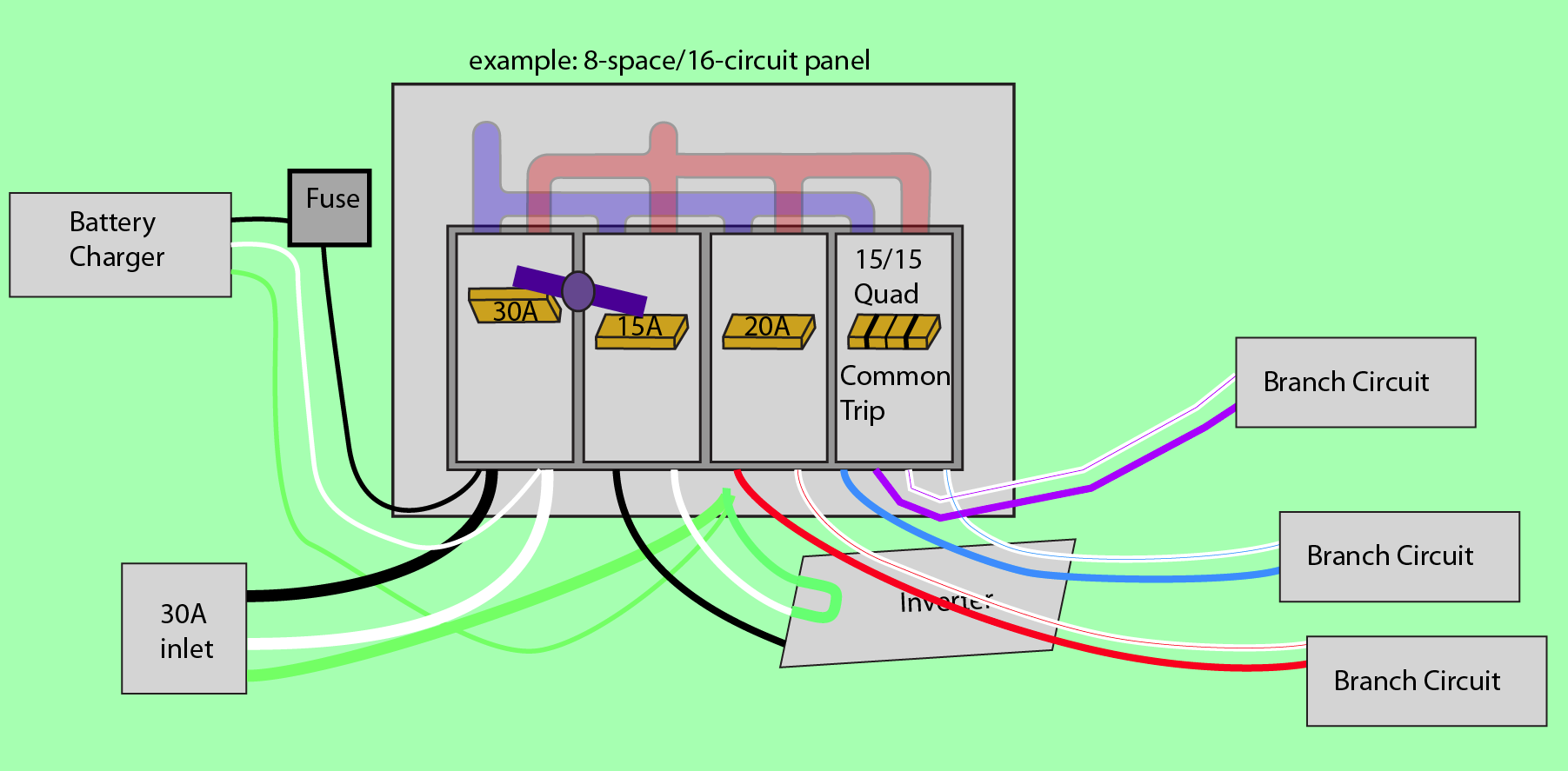I am working on installing a DC to AC inverter (Victron Energy Phoenix 800VA) in my little teardrop RV such that the Inverter powers ALL the AC ports when it is turned on. The objective is to have it feed the AC panel when on. The concern is getting the AC-DC battery charger to be automatically shut off when I turn on the Inverter.
The setup is pretty simple:
Today: Shore power > AC panel > AC-DC battery charger > 12v battery & 12v panel
With Inverter installed: 12v battery > DC to AC inverter > AC panel
There is no problem as long as the Inverter stays off, but once the inverter is turned on, the AC-DC charger will try to charge the battery from the Inverter. I have seen the solution is to put a contractor (AC relay) between the AC Panel and AC-DC charger that is switched by power coming from the Inverter. I totally get the concept, I have some implementation questions:
What contractor should I be using? Shore power is 110v @ 30 amp, the AC-DC charger is nowhere near that power draw and the Inverter is only about 800 watts. I know the contractor needs to have an "Open" unless it is charged (by the Inverter) so that the default mode is shore power will run to the AC-DC battery charger.
How do I wire it to the inverter exactly? Will both hot & neutral go through the contractor or only the hot like a relay?
I would LOVE to get one of the Victron Energy Multiplus unit's, but there are some big problems with that:
Multiplus size: I am only installing Victron Energy Phoenix 800VA, which means if I were to use the Multiplus, I would install the 800VA unit. The problem comes from the fact I am NOT expecting to run the high current items off this inverter: A/C, build it electric heater, and Microwave. I will only use those when connected to shore power. From everything I can tell about the Multiplus 800VA is that when connected to shore power it won't allow more than the 650Watts through to the panel, preventing me from ever using the high current items.
There are reasons I am NOT looking at a larger Multiplus: From everything I understand about the larger Multiplus units, I would have to hook up a big battery bank, somewhere between 300~500Ah. The teardrop does not hav=e the space and I do not want to spend the money on batteries I don't NEED.
All in all, it seems the best solution is a custom system that allows the full 30 amps when connected to shore power to get to the panel but correctly switching it when offshore power to allow the Victron Energy Phoenix 800VA to power the panel without feedback.



